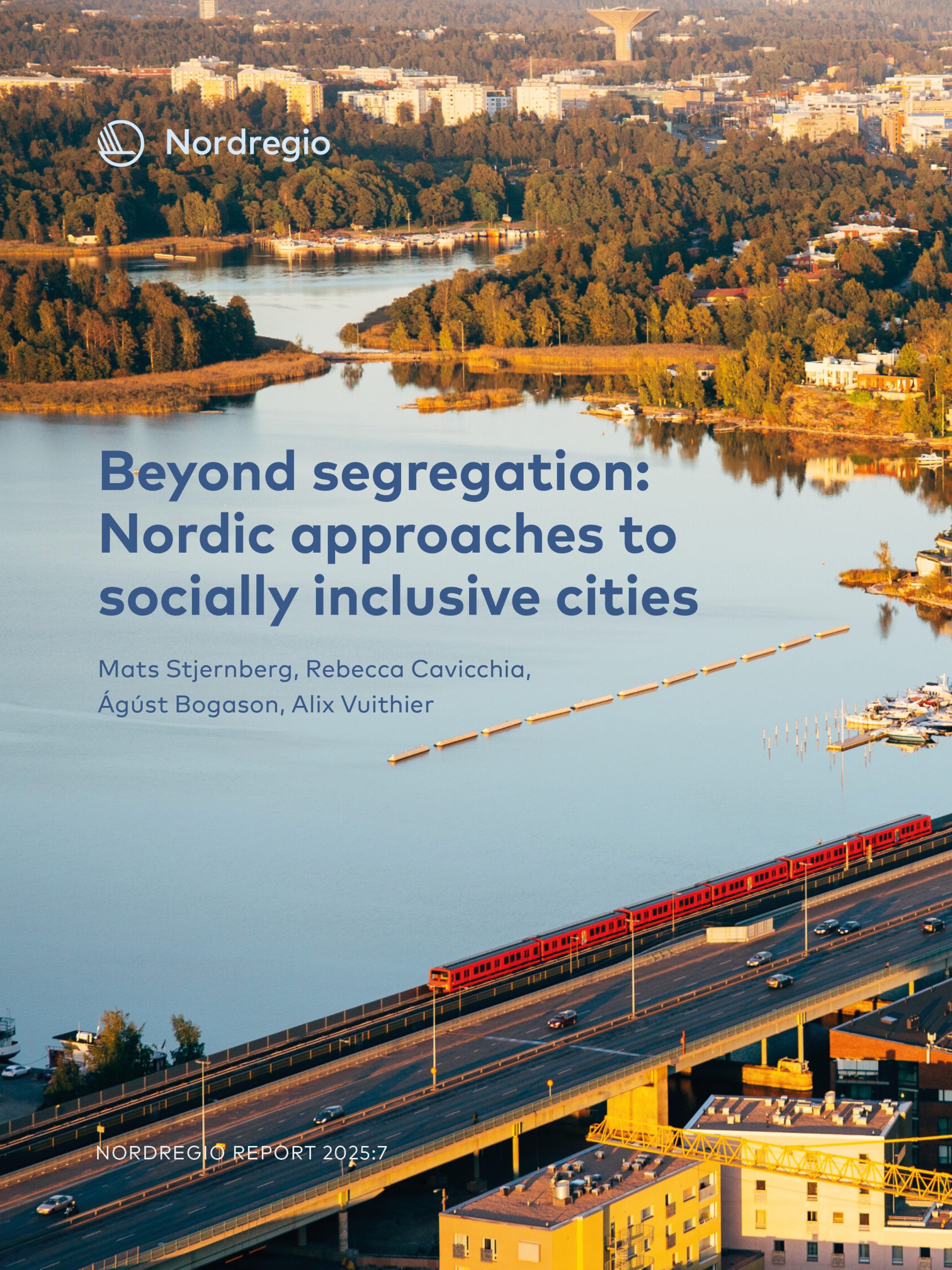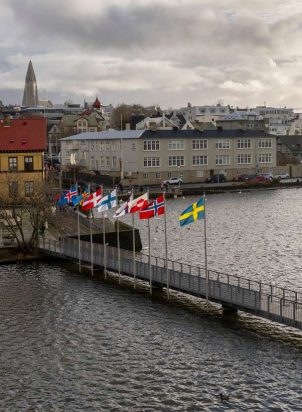Across the Nordic Region, cities are grappling with rising levels of urban segregation. From large capitals to smaller towns, the socio-economic and spatial divides between neighbourhoods are becoming increasingly visible, raising concerns about social cohesion, equality, and inclusion. How has the region put these concerns into action?
Our new report, “Beyond segregation: Nordic approaches to socially inclusive cities,” delves into the wide range of policy and planning approaches used to counteract urban segregation and foster social inclusion across the Nordics. Drawing on national and municipal-level experiences from all five Nordic countries, the report offers in-depth insights from 13 cities.
“There’s no one-size-fits-all solution,” says Mats Stjernberg, Senior Research Fellow at Nordregio and lead author of the report. “But we do see a common recognition across the region that creating more inclusive cities requires long-term commitment at multiple levels, and a real willingness to deal with both the deeper structural issues and the more visible, local challenges.”
From strategies to segregation barometers
While the specific approaches vary across countries and cities, a number of trends stand out. Many governments and municipalities are pursuing area-based interventions, such as physical regeneration, mixed housing developments, and targeted social services, but alongside broader policy shifts in housing, education, employment, and integration.
In Finland, the City of Helsinki has implemented the Suburban Regeneration Model (kaupunkiuudistus), which focuses on revitalising specific suburban areas. The model includes infill construction, physical upgrades, and investments in public services, and is part of a broader commitment to counteract segregation and improve neighbourhood liveability. This area-based model is cross-sectoral by design, combining housing, planning, and social policy measures.
The report also highlights the increasing use of data to support decision-making. From Sweden’s national Segregation barometer (Segregationsbarometern) to local indicator systems in Finland, spatial data and statistics are increasingly used to assess levels of segregation, monitor changes over time, and support policy design. For example, the Swedish city of Örebro uses the national Segregation Barometer to monitor socio-economic patterns across its neighbourhoods as part of its urban master plan. The municipality tracks changes in segregation using an inequality index and categorises neighbourhoods into five socio-economic types to guide planning and housing policy. However, the authors caution that indicators must be used with care.
“Indicators are vital tools, but they carry a risk of oversimplification and stigmatization,” explains Stjernberg. “They should always be paired with qualitative insights and community knowledge.”
Participation, planning, and policy alignment
Another key issue the report explores is the central role of participatory planning. While democratic engagement is a core value across the Nordics, reaching marginalized groups and turning dialogue into action remains a challenge. The report notes that targeted outreach, inclusive design processes, and the use of digital engagement tools can help close this gap.
In this area, the city of Umeå is notable for its neighbourhood dialogue process, which included online platforms, street interviews using a “dialogue bicycle,” and school workshops to reach a wide cross-section of residents. The initiative aimed to build trust and gather input to guide urban development and social planning.
Copenhagen, meanwhile, has introduced initiatives like “Senior Friendly Copenhagen,” which combined interviews, community walks, and digital mapping to engage older adults and improve public space accessibility. The result? Around 500 new senior-friendly benches were installed across the city.
In Bergen, the municipality is leveraging architecture as a tool for inclusion. Its Architecture+ strategy focuses on social interaction, inclusive neighbourhoods, and universally accessible public spaces. The city’s planning also prioritises varied housing options and design principles that support community integration.
Avoiding the pitfalls of area-based approaches
While physical regeneration projects and neighbourhood renewal schemes have clear benefits, improving housing, services, and public space, they often struggle to address the deeper drivers of segregation. Without parallel investment in structural issues such as employment, education, and access to welfare, there is a risk of merely shifting inequalities from one area to another.
“A narrow focus on specific neighbourhoods can lead to displacement or even gentrification,” says Stjernberg. “A more holistic, cross-cutting approach is needed, one that considers both the social and physical aspects of inclusion.”
Ultimately, Beyond segregation is not a catalogue of best practices—it is a reflection of the Nordic Region’s evolving efforts to build fairer, more socially inclusive urban futures. It underscores the need for policy coherence, knowledge-sharing, and deep collaboration between citizens, planners, and decision-makers.

Key takeaways of the report:
✔️Built environment interventions can support inclusion but are no substitute for addressing underlying inequalities.
✔️A holistic, multi-sectoral approach is essential to tackle segregation effectively.
✔️Indicators must be used thoughtfully to inform action without reinforcing stigma.
✔️Participatory planning must be inclusive of diverse voices, especially those often left out.





